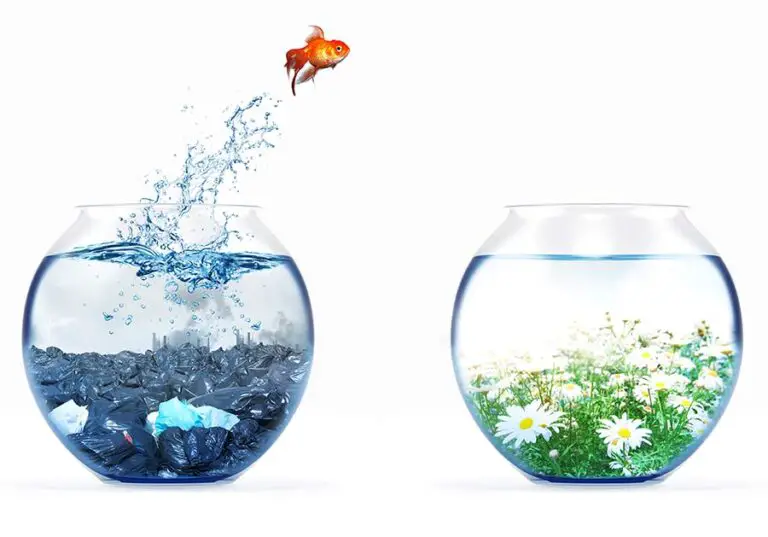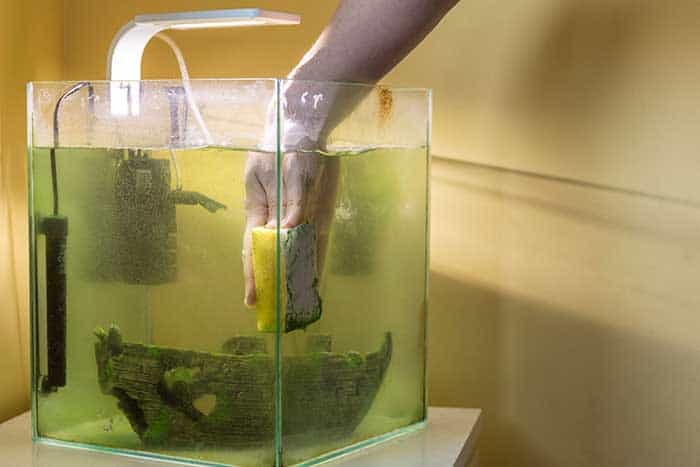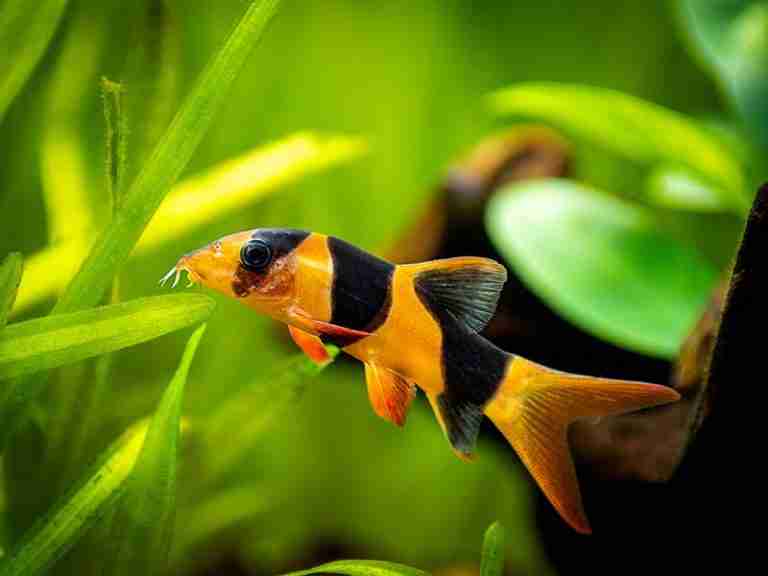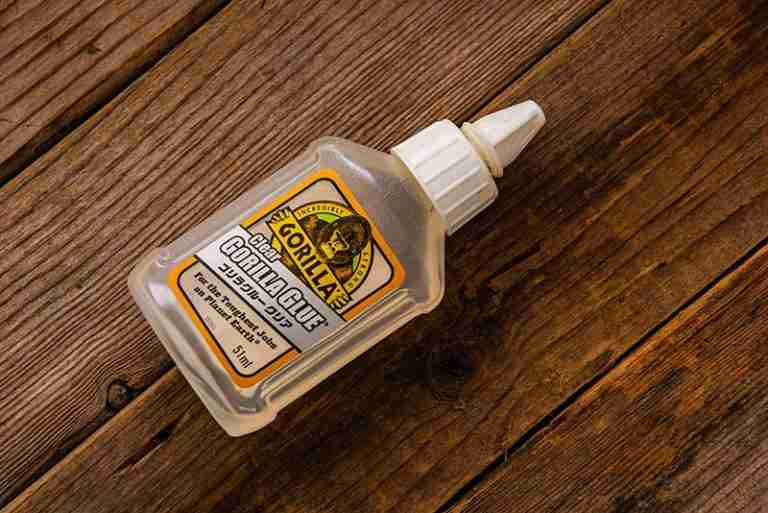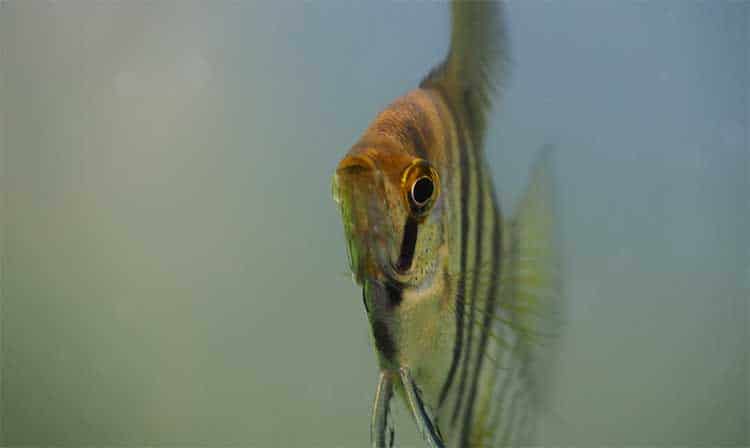How Long Can Tropical Fish Live Without A Heater
There are several reasons why you may need to know how long can tropical fish live without a heater. You may have a heater that has broken down, or you may be struggling with a power outage. You may not own a heater at all and be wondering if your tropical fish can survive in cooler temperatures all year round.
The ideal temperature for most tropical fish is between 74°F and 82°F. A heater will provide a constant temperature within this range. Without a heater, the water temperature can drop significantly in only a few hours and can cause your fish to become lethargic and, over time, cause death.
Every tropical fish species is different and will have various water quality and temperature tolerances, so it isn’t easy to talk about any specific species.
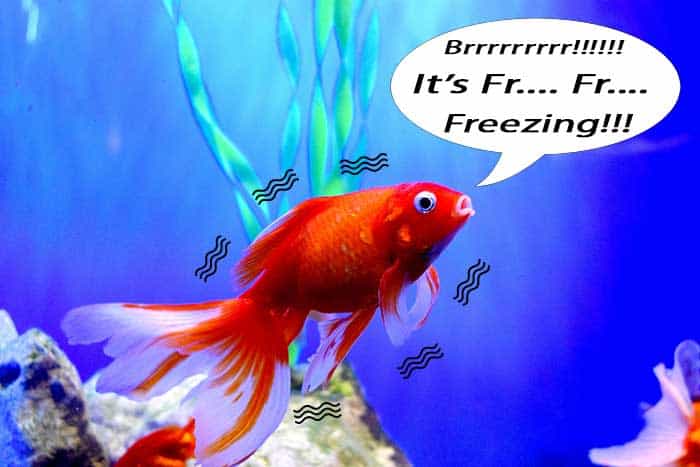
Whatever the reason you are asking, “how long can tropical fish live without a heater” this article covers many of the associated questions.
I cover whether tropical fish really do need a heater and why and can tropical fish survive without one. I will also talk about what you should do if suffering a power outage or a heater that has broken down.
Do Tropical Fish Need A Heater?
Tropical fish will need a warm water temperature for optimum health. Whether this comes from a heater or not will depend on the climate you live in, the size of the tank, and how consistent the ambient temperature is.
When talking about aquarium water temperature, there are 3 categories of fish:
- Tropical fish – Native to tropical climates and will require warmer water temperatures to remain healthy.
- Temperate fish – Native to areas where warmer and colder climates overlap. Temperate fish can usually survive a wider-ranging fluctuation of temperatures, although temperatures usually remain quite consistent within their local area.
- Coldwater fish – Native to colder climates and would not do well in warmer water.
Fish are cold-blooded creatures, also known as aquatic ectotherms, that cannot regulate their own body heat or temperature. The surrounding temperature dictates a fish’s body temperature.
Fish are also poikilothermic, which means their body temperatures can vary, usually slightly higher than the surrounding temperature.
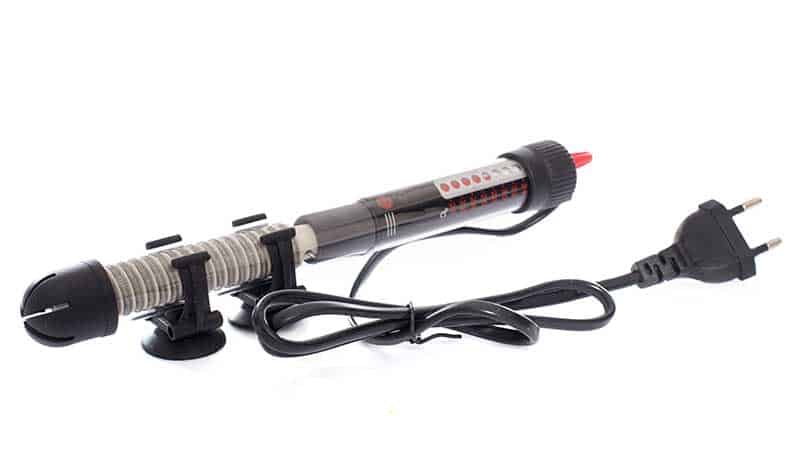
The table below will give you a rough guide to the temperature ranges required for cold water, cool water, and warm water fish.
| Fish Type | Temperature Range |
|---|---|
| Tropical (Warm Water) Fish | 23.5°C – 27.5°C (74°F – 82°F) |
| Temperate (Cool Water) Fish | 16°C – 25°C (61°F – 77°F) |
| Cold Water Fish | 12°C – 20°C (54°F – 68°F) |
The above temperatures only apply to indoor fish species as cold-water fish in the wild can survive arctic climates, which they won’t experience in a home aquarium.
I have also written a similar guide to this one based on betta fish which is also very informative: Do Betta Fish Need A Heater (Can they live in cold water).
Changes To Water Temperature In The Wild
In the wild, the water temperature will vary throughout the seasons. A hot sunny day will cause the surface temperature to be much warmer than a few feet below. When in the wild, fish can move around until they find an area with the right temperature.
It is also important to understand that the water temperature will change more gradually in the wild. A larger body of water will hold its temperature for longer and gradually decrease as the weather gets colder, making it easier for fish to adjust.
Temperate fish that might be exposed to much colder temperatures may burrow into the ground and hibernate until the warmth returns.
Changes To Water Temperature In A Fish Tank
The water temperature in freshwater fish tanks can change very quickly. It may only take an hour or 2 for a significant rise or fall of the tank temperature due to the speed it can transfer through this much smaller body of water.
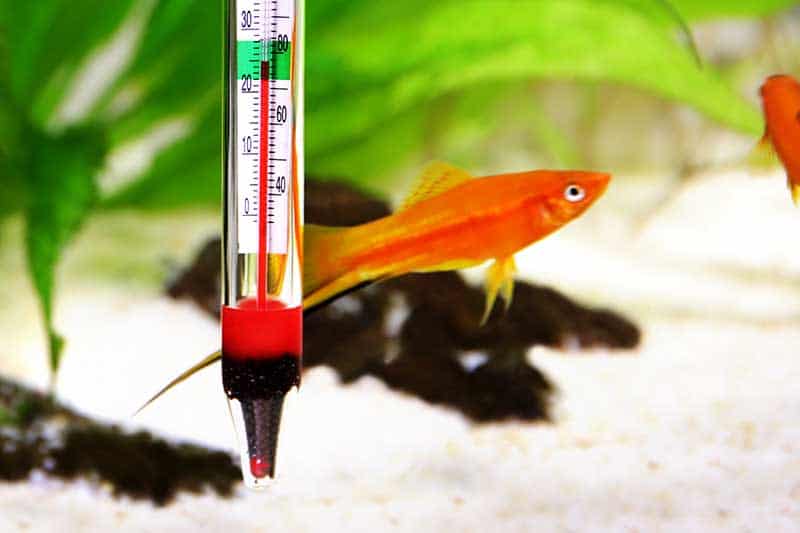
Sudden changes like these can negatively impact a fish’s health, both in the short term and in the long term.
Can Tropical Fish Live In Cold Water?
Tropical fish can live in cold water for short periods only. Changes of only a few degrees should have minimal impact. Tropical fish will need a tank temperature similar to what they are used to in their natural habitat.
Many fish’s natural bodily functions have adapted to work at their best when the body is at the correct temperature. A sudden drop in temperature can cause lethargy, stress, and lowered immunity making your fish more susceptible to illness.
Prolonged exposure to cold temperatures can cause organ failure and lead to death.
How Long Can Tropical Fish Live In Cold Water?
Although not advised, tropical fish should survive in cold water for 1 or 2 days providing the temperature is only around 10°F to 15°F below their suggested temperature. As long as the temperature change isn’t huge, water that is too cold is less harmful than water that is too warm.
Cold water will cause a fish’s biological processes to slow down, similar to how hypothermia affects humans. Breathing will slow, causing the fish to require less oxygen and nutrients, and it will become lethargic, staying in one place and sleeping more.
Water that is too warm carries less oxygen. All of the fish in the tank will compete for oxygen. In a well-stocked tank, you may notice your fish swimming at the top of the tank as they begin to suffocate, which is when you will need to add oxygen to the fish tank as a matter of urgency.
If your tank’s water temperature is over 90°F, this may kill the good bacteria, which helps control water conditions, avoiding spikes in ammonia, nitrites, and nitrates. As the level of good bacteria decreases, the likelihood of disease and infection spreading will increase.
How To Heat A Fish Tank Without Power
Power outages can be common in some areas of the world, especially in colder, stormier climates. Some power outages can last for several days in remote areas, so knowing how to heat a fish tank without power would be wise.
Keeping your fish alive is the main priority, even if the outage is only for a short period.
I will list some of the most practical methods below:
- Have a small tank on hand. – Large tanks containing more water will be harder to heat than small tanks, however, a larger tank will retain heat for longer than a smaller tank. When your fish are in a smaller tank, you can use some of the suggestions below to heat the water.
- Use a hot water bottle. – Boiling water is not always easy without electricity, but you may have gas to heat a pan of water, or you can use a camping stove. Transfer the boiling water into a hot water bottle and either place it inside the tank or rest it on the tank glass.
Adding a hot water bottle directly to a small tank may not be wise as it can drastically raise the tank’s water temperature causing it to become too hot. The area around the bottle will undoubtedly be too hot for your fish. - Use a power inverter or heavy-duty power pack. – Power inverters can turn a simple car battery into an easy source of mains power In the event of power loss. When the inverter is attached, simply plug in any mains-powered device for a temporary source of electricity.
I would recommend only plugging in the tank heater, as fish can do without a filter for a short time. Should you lose power for several days, you will need to preserve the battery life as much as possible. - Use a battery-powered, heated mat. – A heated mat can be placed under a small fish tank, and the heat will travel upwards, warming the water inside.
- Move your tank to a warm area. – Keeping your fish tank away from draughty areas will reduce the speed at which heat is lost from the tank. If the exterior tank glass becomes cold, the heat will escape more quickly through the glass.
- Wrap the aquarium and keep a lid on it. – You can wrap your fish tank with a warm blanket or fleece to help retain some heat. Heat rises, so if your fish tank doesn’t have a lid, make one. Cooking foil will deflect heat back into the tank and is the best solution, but any material can be used as a short fix.
- Use the sun as a source of heat. – If it is sunny outside, it is likely that the window will be a good source of heat. By moving your tank closer to the window during the day, the tank water will heat up pretty quickly. The window will become colder at night, so return your tank to a non-draughty area.
- Add some warm water directly to your aquarium. – Similar to a water change, you can add some treated warm water to your tank. Don’t do this in large amounts, as the water hasn’t been cycled and won’t contain any beneficial bacteria. It would be best to remove some water to heat from the main tank before adding to your temporary tank.
There are many ways to heat a tank when you have no power. Many are not listed above, and many you may come up with yourself.
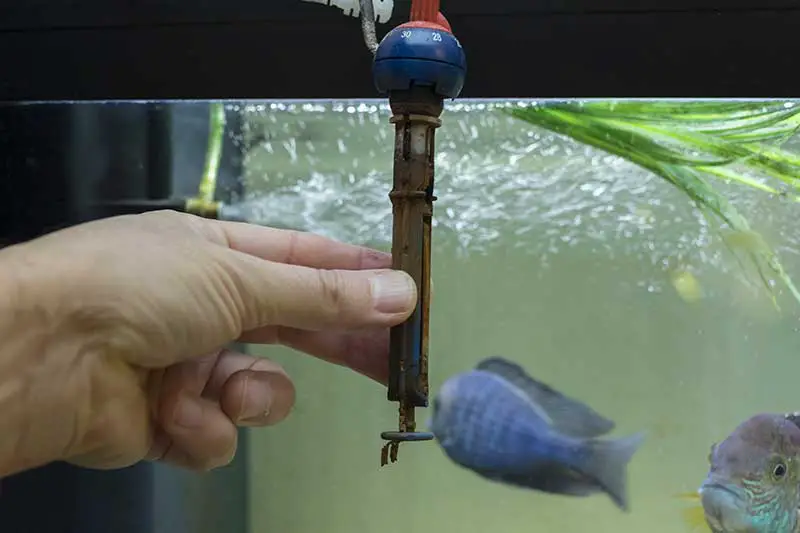
Whichever method you use, make sure to monitor the temperature of the aquarium water to avoid overheating the tank, as this will cause other problems.
Can I Add Warm Water To A Fish Tank?
You can add warm water or even hot water to a fish tank, provided the water has been adequately treated and is suitable for the aquarium. Hot water should only be added to areas away from all the fish to avoid burning them until the heat has a chance to mix evenly through the rest of the tank.
One method I would use to keep my fish tank warm would be to remove some water and heat it slowly until warm before adding it back. This way, I am using water that I know is healthy and suitable, and by heating it slowly, I will avoid killing off too many of the good bacteria within it.
By adding warm water only, it will be necessary to repeat this frequently. If you add hot water, this will have a more prolonged effect and last longer.
When adding hot water, you must be very careful not to harm your fish. There are several ways to add hot water safely, and the method I would use would be similar to adding a hot water bottle.
- I would first add a separator to the tank. Ideally, use one with small holes to allow water to pass through. You will only need to separate a small section of the aquarium.
- Add hot or boiling water to a plastic bag or a clean, chemical-free hot water bottle.
- Place the bag or bottle into the sectioned-off area of the tank, away from the glass. Hot water can crack the glass.
- Wait while the natural water current passes around the bag, distributing the heat evenly through the aquarium.
- Monitor the water temperature in the non-segregated section of the aquarium and remove the bag if the water becomes too warm.
How To Heat A Fish Tank Without A Heater
Tropical fish survive in the wild without a heater, so keeping fish in an unheated tank is possible. If you live in a warmer climate, use sunlight and ambient heat to maintain this temperature.
Although getting a small tank to the correct temperature is quicker, a larger tank will retain heat for longer (especially overnight).
You will have less control over the temperature of your tank when not using a heater, but using some of the methods listed below should help you get your tank warm enough and retain the temperature.
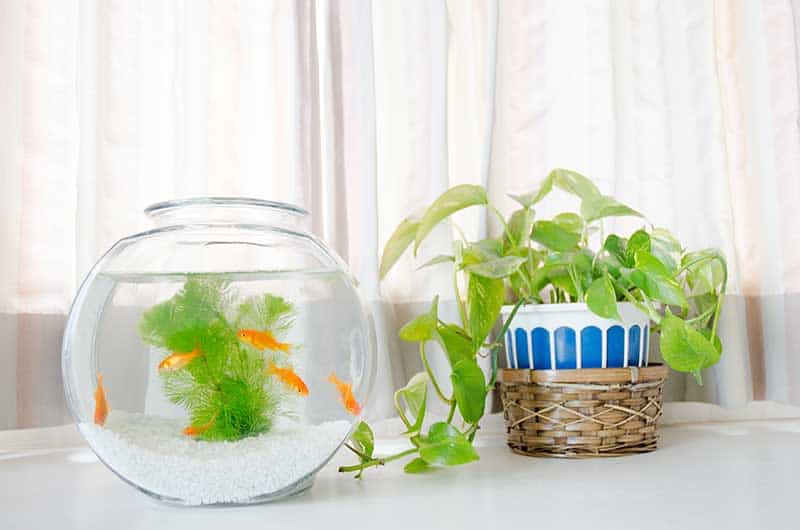
- Move the tank closer to the window or move it into another room during the day where it will receive sunlight. The main thing is to make sure your fish tank is exposed to the maximum amount of warmth possible, but avoid strong direct sunlight, which may overheat the water.
- Keep the room’s ambient temperature warm and as consistent as possible. Office blocks and other commercial buildings will usually keep a consistent temperature using heating or air conditioning. If you have your tank at home you can also do this, and the room’s ambient temperature will impact the temperature of the water.
- Choose the right size tank. Smaller fish tanks will heat up quicker but won’t retain as much heat during the night when the temperature may drop, whereas larger fish tanks will take longer to warm up initially but will retain the heat for longer.
- Keep your fish tank away from draughty areas. Glass can quickly take on both the warm or cold ambient temperature, which will transfer through to the aquarium water. Keeping a cold draught away from the aquarium glass will definitely help keep the water warmer.
By following the above steps, you should manage to keep your tank consistently warm enough for many tropical fish species, especially those that live in temperate climates.
Final Thoughts
If you do not live in a warm or hot climate, It will be much more difficult to heat a tank without a heater over the long term, so I would recommend only keeping coldwater fish species or investing in a tank heater.
Aquarium heaters are relatively inexpensive to buy and use. They provide a level of control that other heating methods can’t give you.
For most fish species, providing the water temperature is close to their optimal range, consistency is usually more important. Tropical fish survive the changing seasons and fluctuating temperatures when in the wild.
Fish prefer and adapt better to gentle changes within their environment. Heavily fluctuating and dramatic temperature changes will cause your fish to become stressed, leading to illness, especially over the long term.
Most people who keep fish will also invest in the appropriate equipment, such as a heater and filter, to make life more simple, and the most common cause for concern is during a power outage.
Power outages are common, and by using the guides above and some simple preparation, keeping your fish tank warm should be pretty easy to do.


